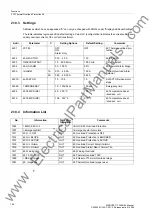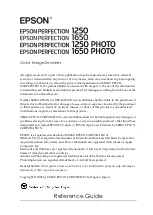
Functions
2.10 Thermal Overload Protection 49
SIPROTEC, 7SJ62/64, Manual
C53000-G1140-C207-2, Release date 01.2008
192
For the
49 K-FACTOR
to be set in the device the following applies (address
4202
)
with
I
max prim
Permissible thermal primary current of the motor
I
Nom Obj.
Nominal current of the protected object
I
Nom CT prim
Nominal primary CT current
Example: Motor and current transformer with the following data:
Time Constant
The overload protection tracks overtemperature progression, employing a thermal differential equation whose
steady state solution is an exponential function. The
TIME CONSTANT
τ
th
(set at address
4203
) is used in the
calculation to determine the threshold of overtemperature and thus, the tripping temperature.
For cable protection, the heat-gain time constant
τ
is determined by cable specifications and by the cable en-
vironment. If no time-constant specification is available, it may be determined from the short-term load capa-
bility of the cable. The 1-sec current, i.e. the maximum current permissible for a one-second period of time, is
often known or available from tables. Then, the time constant may be calculated with the formula:
If the short-term load capability is given for an interval other than one second, the corresponding short-term
current is used in the above formula instead of the 1-second current, and the result is multiplied by the given
duration. For example, if the 0.5-second current rating is known:
It is important to note, however, that the longer the effective duration, the less accurate the result.
Permissible Continuous Current
I
max prim
= 1.2 ·
I
Nom Obj.
Nominal Motor Current
I
Nom Obj.
= 1100 A
Current Transformer
1200 A / 1 A
www
. ElectricalPartManuals
. com
















































